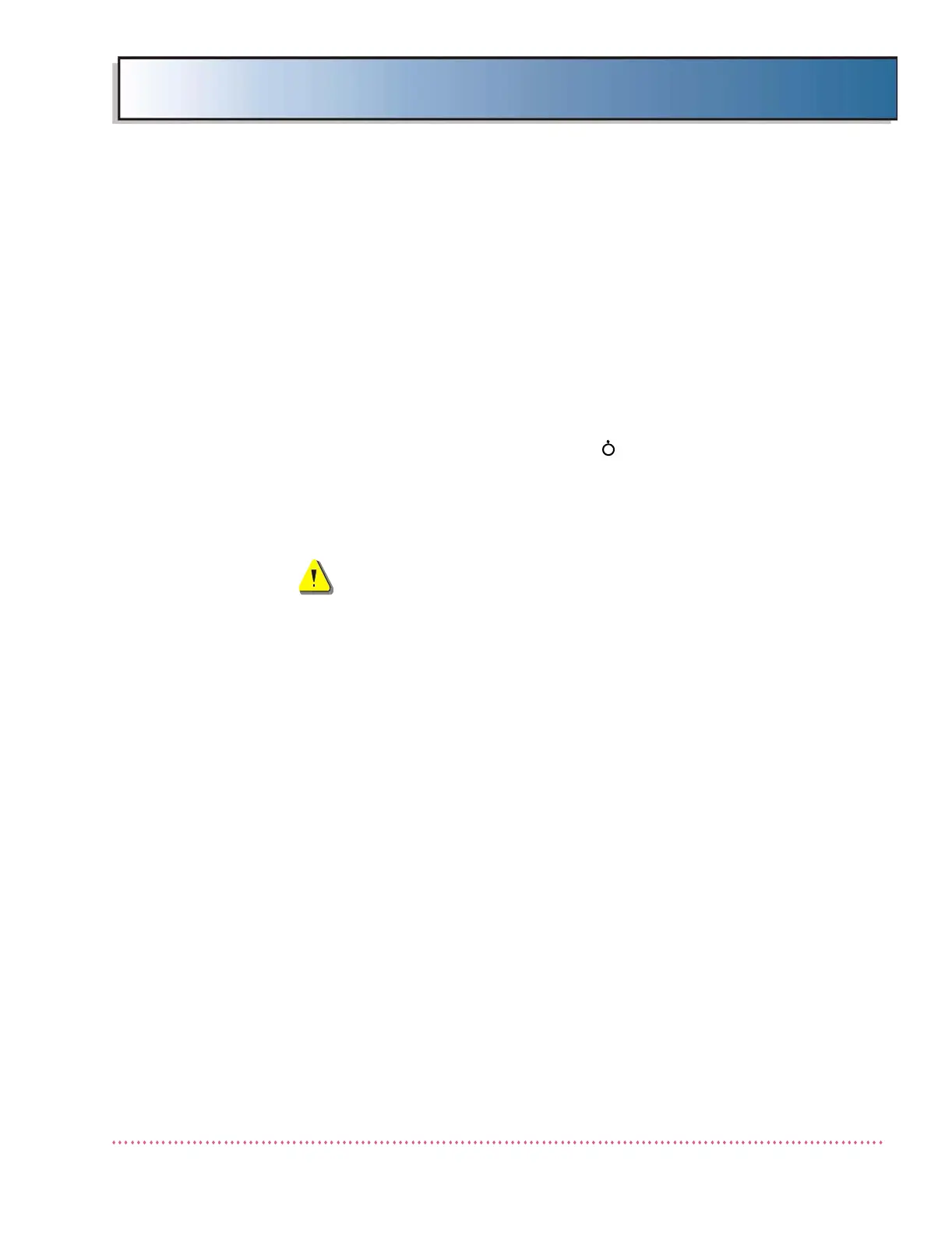Chapter 4 Theory of Operation
HF Series X-ray Generators - Service Manual Revision W
Quantum Medical Imaging 4-11
generator is turned ON, the relays are again energized, disconnecting the
bleeder resistors.
Generator Auto-Shutoff Circuit
The Operator Control Panel’s (OCP) microprocessor, located on the OCP Con-
trol Board, monitors the OCP keypad for button activity. If no button is
depressed on the OCP for a user-defined period, ranging between 30 and 180
minutes, the microprocessor energizes the Auto-shutoff relay K6. This opens
the System-ON signal ground path (normally low-true), deactivating relay K5
and turning OFF the generator.
To restore the generator to the ON state, the system’s ON/Standby switch on
the OCP must first be set to the Standby ( ) position to release relay K6.
The Auto-shutoff circuit also provides the microprocessor the ability to turn
OFF the generator should a critical fault develop in the system.
Battery Charger Circuit
Warning! Be aware high voltage DC is constantly
present within the battery arrays and on the Line
Monitor/Source Charger Board A8, even when the
AC line input power is disconnected.
The Battery Charger consists of two similar power supplies, one positive (+)
and one negative (-), both of which are necessary to charge a single battery
tray.
220VAC is fed from two independent secondary windings of the AC Mains
Power Transformer (T1) to two full-wave bridge rectifiers. The unfiltered
+/-283VDC outputs are fed to twin Triacs controlled by Pulse Width Modu-
lated (PWM) switching circuits that simultaneously and continuously direct
charging current to the weakest of the two trays (when two are present).
Together, these two power supplies provide the needed charging current to
each half of both battery arrays.
This arrangement permits the creation of dual, center-grounded, 410VDC
Anode and Cathode Stored Energy Power Supplies using just two 205VDC
regulated battery chargers. Each charger keeps its half of each battery tray
at precisely 205VDC by varying the duty-cycle of its Triac switch from 0% to
100%.
If the Battery Monitor circuit senses an over-voltage condition, it will turn off
relays K1 and K3, disconnecting the Triacs from the output of the bridge rec-
tifiers. The charging current will remain interrupted until the over-voltage
condition is corrected. An Over-voltage Fault signal is also sent to Logic
Board A1, which will return a separate shutdown command to the PWMs for
redundant safety.

